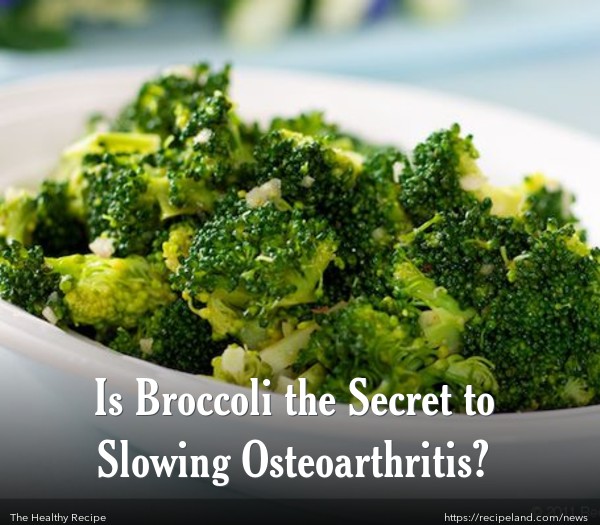This research focused on the effects of —a compound found in broccoli—on the cartilage of mice. Those exposed to it showed less signs of inflammation and cartilage damage than those taking a placebo, which suggests that the compound may have anti-inflammatory properties.
Usually, patients who suffer from osteoarthritis experience slow destruction of their cartilage. This makes joint movement stiff, uncomfortable, and often painful. The research—which took place in August 2013—compared mice exposed to sulforaphane with those that did not consume it. While this compound is found in both broccoli and cabbage, it is particularly abundant in broccoli. In the past, papers have demonstrated that it may have anti-inflammatory and anti-cancer properties.
How Sulforaphane Works
blocks the actions of certain digestive enzymes. It is these enzymes that are responsible for breaking down cartilage, causing the wearisome side effects that patients experience. The researchers focused on whether this compound entered the joints and how effective it was while there.
Now that the researchers have demonstrated the effects of this compound on mice, they want to see if humans experience the same benefits. If this is the case, their findings could be groundbreaking in terms of giving patients nutritional advice that could help them protect their joints. In addition to this, they could encourage people to eat broccoli after the onset of osteoarthritis to see the benefits.
Currently, there are no pharmaceutical remedies for osteoarthritis that tackle the root cause rather than addressing just the symptoms. Adding broccoli to the diets of those who are at risk and sufferers is a safe way to prevent the condition's onset. While surgery is available to those who suffer from this condition, being able to extend the amount of time a patient can live with it before resorting to surgical interventions is important. It can improve their quality of life and prevent unnecessary procedures.
The Importance of this Study for Understanding Osteoarthritis
There are currently 8.5 million people in the UK suffering from osteoarthritis. This is a degenerative condition, which can affect mobility as it progresses. It costs the UK 5.2 billion a year, with tens of thousands of surgeries arising because of it. Being able to underpin the benefits of protective diets could prevent such pressures on healthcare systems, as well as the lives of patients.
In Australia, osteoarthritis is the most common form of arthritis. Much like the UK, a large proportion of the population is affected. As of 2007-2008, it was estimated that there are 1.6 million patients suffering. Arthritis Australia believes that around 50% of these people are of working age. In addition to this, there are concerns that ongoing trends could lead to 3.8 million people becoming patients by 2050.
This naturally means that being able to prevent the condition through dietary measures could reduce the risk of unnecessary suffering. Economically, it is estimated that the cost of this condition in terms of productivity is around $23 billion.
Now that there is evidence of the benefits of dietary interventions, small scale human trials are being planned. The next trial will be carried out by Diet and Health Research Industry Club, which will be testing the effects of super broccoli on patients.










Comments